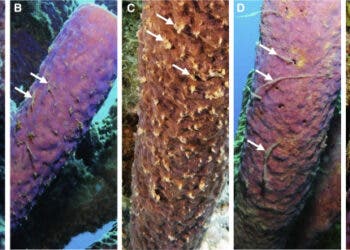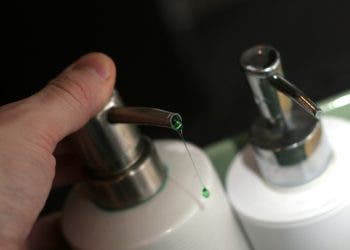
Lydia Bourouiba studies fluid dynamics at MIT and she says the seemingly simple act of sneezing has one of the most complex fluid physics. Aided by colleagues at her lab, Bourouiba used high-speed cameras to film volunteers while they sneeze. The results are mesmerizing shots of bodily fluids dancing in the air. Gross or art? That’s beside the point because slow mo sneezing might actually save some lives.
Bless you!
Besides being able to detect odors, the sensors that line the insides of the nose are very good at detecting foreign particles that might cause us harm. When these sensors detect irritant particles, they instruct the hair-like paddles that line the sinuses called cilia to move and expel the objects. A 2012 study published in FASEB Journal found that the burst of air produced by a sneeze not only clears nasal passages but also triggers the cilia sensors to kick the paddles into high gear for an extended period. What they say, essentially, is that a sneeze acts like a sort of reset button for the sinuses.
While sneezing is great to keep irritants such as germs, dust, pollen, animal dander, or pollutants from reaching the lungs and other vital organs, the expulsion also puts other people at risk. Respiratory diseases, for instance, often move from person to person transported by germs expelled through sneezing. If we can understand how a sneeze cloud moves, then we can be better prepared to contain risks, or at least that’s the thinking behind Bourouiba’s research.
“There’s a whole range of droplet sizes in this cloud, and the cloud is made of hot and moist air,” Bourouiba told NPR. “And it’s turbulent, so that means that it has swirls and eddies, and it’s moving very fast.”
One of the most revealing findings was that tiny droplets in a sneeze can travel through a whole room, in some conditions, in only a couple of seconds. The droplets can also remain suspended in the air for many minutes, the scientists reported in the New England Journal of Medicine.
“The largest droplets rapidly settle within 1 to 2 m away from the person. The smaller and evaporating droplets are trapped in the turbulent puff cloud, remain suspended, and, over the course of seconds to a few minutes, can travel the dimensions of a room and land up to 6 to 8 m away,” the researchers wrote.
So far, the volunteers Bourouiba has worked with were all healthy. The next step in her research is to enlist participants who are down with the flu and have them sneeze in controlled, hospital-like rooms.
The ultimate goal is to understand the physics of sneezing very well. This knowledge, coupled with germ theory and how respiratory diseases get transmitted between hosts, will enable scientists to design hospital rooms with just the right amount of moisture, ventilation, temperature and space so that risks are kept to a minimum.
And if you’ve ever wondered what’s the best way to keep your cold-ridden sneezes from infecting innocent bystanders, Bourouiba says the most effective technique is to sneeze on your elbow, not in your hand or fist. She says the elbow is the most effective part of the body in reducing a sneeze cloud’s momentum.






